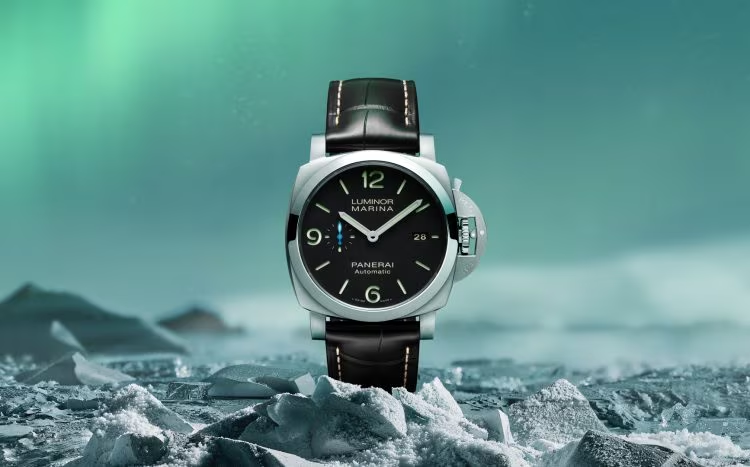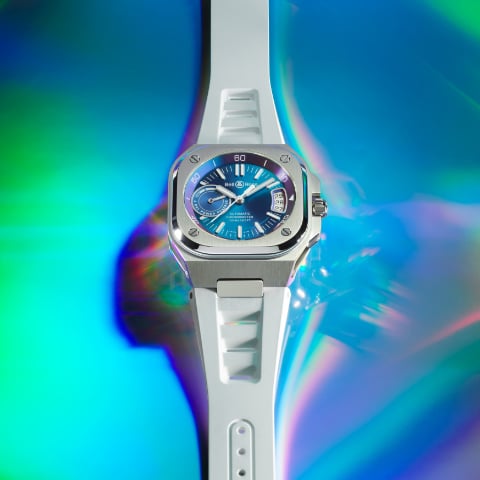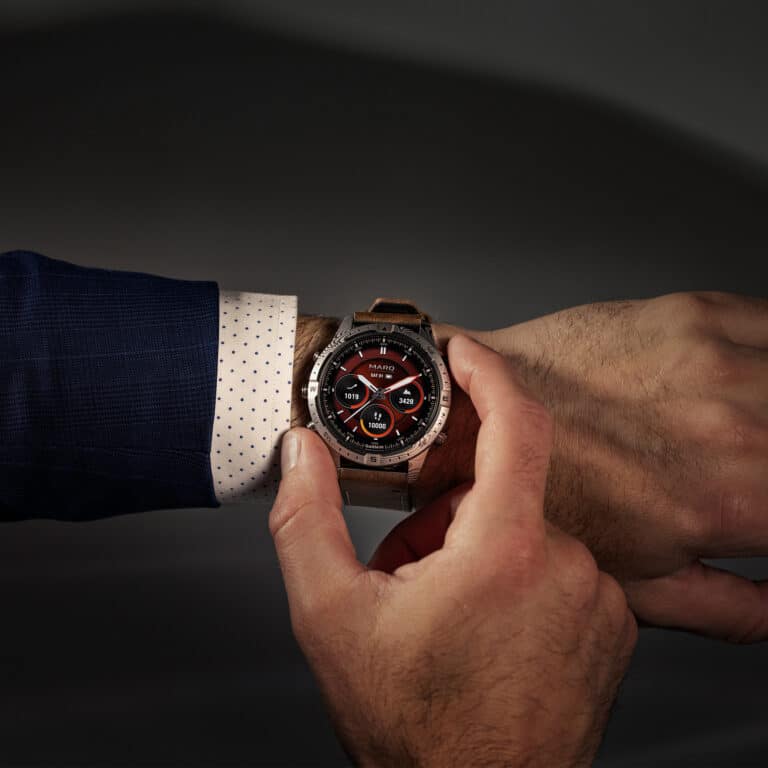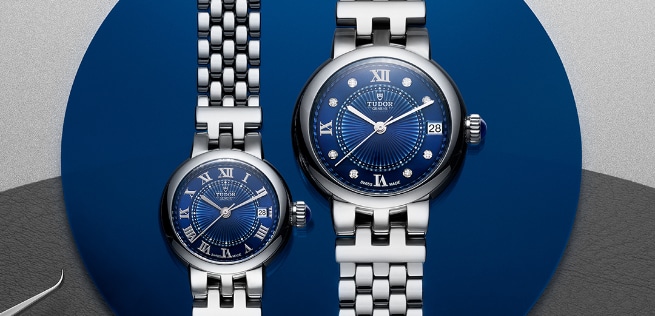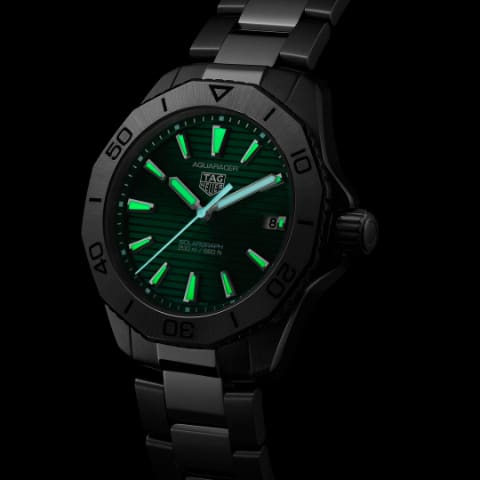Junghans watch company has been setting international standards since the day it began its life back in 1861 in the Black Forest of Germany, in the charming town of Shcramberg. Since then their highly ambitious legacy has gone on to produce superior innovations that we can only attach to the highest class of watchmaking in the world today.
It is very rare that a timepiece of any kind from the 1950’s can be confused with that of a modern day design. However, if flicking through one of Junghans’ old catalogues from this era you make this mistake, you would certainly not be alone. The unique combination of precision technology and impressive aesthetical appeal from years of cutting edge fashion and design, gives the impression that some of Junghans’ kitchen wall clocks and those wrist w atches from the Max Bill Dame collection look like they have just jumped off the shelves of those high end stores of London’s luxury quarter! It is not until one really steps back in time to learn about the hard work and challenges faced by one single craftsman in Germany, many of which only spurred Erhard Junghans on in his vision, that we can really appreciate just how influential the brand became, shaping the direction of many other German watch brands in years to come.
atches from the Max Bill Dame collection look like they have just jumped off the shelves of those high end stores of London’s luxury quarter! It is not until one really steps back in time to learn about the hard work and challenges faced by one single craftsman in Germany, many of which only spurred Erhard Junghans on in his vision, that we can really appreciate just how influential the brand became, shaping the direction of many other German watch brands in years to come.
Colin Powell once said: “A dream doesn’t become reality through magic, it takes sweat, determination and hard work” and this is precisely what has given Junghans one of the most compelling success stories in the history of German watch making. Erhard Junghans and brother-in-law Jakob Zeller-Tobler began their first in a long line of achievements by specialising in individual watch parts for production within the clock making industry, but it wasn’t until five years later that the brand’s first ever complete watch was crafted. In a time where small family-run watchmaking businesses felt the strain within the economy as heavy volumes of American watches were imported and sold in Germany, the brand found ways to overcome this problem firstly by adopting American style designs and production methods and then over time, incorporating more of a German feel. Gradually as a result, Junghans came to be well known for high quality and affordable wristwatches. In 1893 the one millionth watch was produced and gradually the manufacturing facility soon expanded with more than 3,000 employees producing more than 3 million watches per year. Junghans 8 point star trademark was patented in 1890 and impressively the brand has registered over 3000 patents since its soaring success - a reflection of the company’s strong ambition and giving Junghans that competitive edge against many other rival watch companies of its time.
 It is not uncommon for us to read about the achievements of many watch brands that start out from something small and in time become a huge
It is not uncommon for us to read about the achievements of many watch brands that start out from something small and in time become a huge
success, so we must ask the question of what makes this particular watch company a cut above the rest? Junghans holds many little victories of its own. To start with the single handmade components for Junghans watches will remain with specialised developers from the beginning of manufacture, until the very final part of their journey is carried where fine tuning and high precision hand assembly will screw the final nuts and bolts of the masterpiece into place. No completion of a watch is preceded until all aspects of criteria are passed with flying colours. Stringent testing, dial assembly, handling, water pressure testing and signal reception sensitivity are to name but a few of Junghans high standards of responsibility in maintaining quality and regulation within the walls of their factory. Secondly, famous for his architect, paintings and sculptures, Max Bill - universal genius and a Bauhaus student - applied constructive  clarity and clear proportions to produce some of the World’s most beautiful clock and wrist watches of all time. The extraordinary designs produced by such an exceptionally talented artist have formed the face of Jungans, most of which remain unchanged to this day. Building on Junghans story, the decades between 1930 and 1960 saw a change in design in Junghan’s next collection - the Meister range. Product designer Anton Ziegler shaped the appearance of the brand’s watches over the next few decades with clean and classic looking faces that tied in nicely with new advancements on the brand’s chronograph mechanism. The tachymeter and telemeter were combined in the Junghans chronograph for the first time ever – again, a development that enriches the Meister line today. By 1951 it was time for another milestone, with 15% share of the entire global production, Junghans held recognition for Germany’s most popular chronometers in the country. Equipped with a built-in shock absorber and acknowledged as ranking amongst the most outstanding of Junghan’s calibres ever produced, the first ever automatic chronometer calibre J83 was launched.
clarity and clear proportions to produce some of the World’s most beautiful clock and wrist watches of all time. The extraordinary designs produced by such an exceptionally talented artist have formed the face of Jungans, most of which remain unchanged to this day. Building on Junghans story, the decades between 1930 and 1960 saw a change in design in Junghan’s next collection - the Meister range. Product designer Anton Ziegler shaped the appearance of the brand’s watches over the next few decades with clean and classic looking faces that tied in nicely with new advancements on the brand’s chronograph mechanism. The tachymeter and telemeter were combined in the Junghans chronograph for the first time ever – again, a development that enriches the Meister line today. By 1951 it was time for another milestone, with 15% share of the entire global production, Junghans held recognition for Germany’s most popular chronometers in the country. Equipped with a built-in shock absorber and acknowledged as ranking amongst the most outstanding of Junghan’s calibres ever produced, the first ever automatic chronometer calibre J83 was launched.
Finally, all the more reason to appreciate how Junghans unique journey has blossomed through time since its birth back in the 19th Century, is the fact that, following all its previous impressive accomplishments, the brand then progressed on to hone in their skills on improving accuracy, greater power reserves and miniaturization in a rapid pace of development. In 1985 they became the first ever manufacturers to introduce a radio controlled table clock using quartz technology and by 1990 this piece of equipment was integrated into a wrist watch. Three years later the brand have put their hands to solar powered instruments and are still continuing to develop their eco-friendly technology, setting trends worldwide with outstanding and unique designs.
